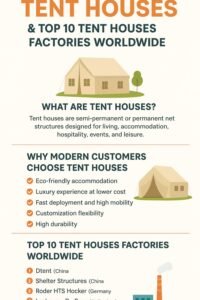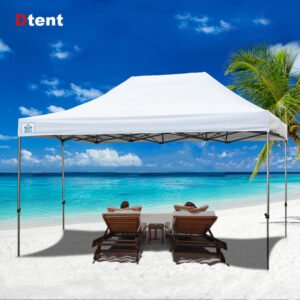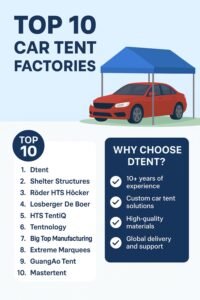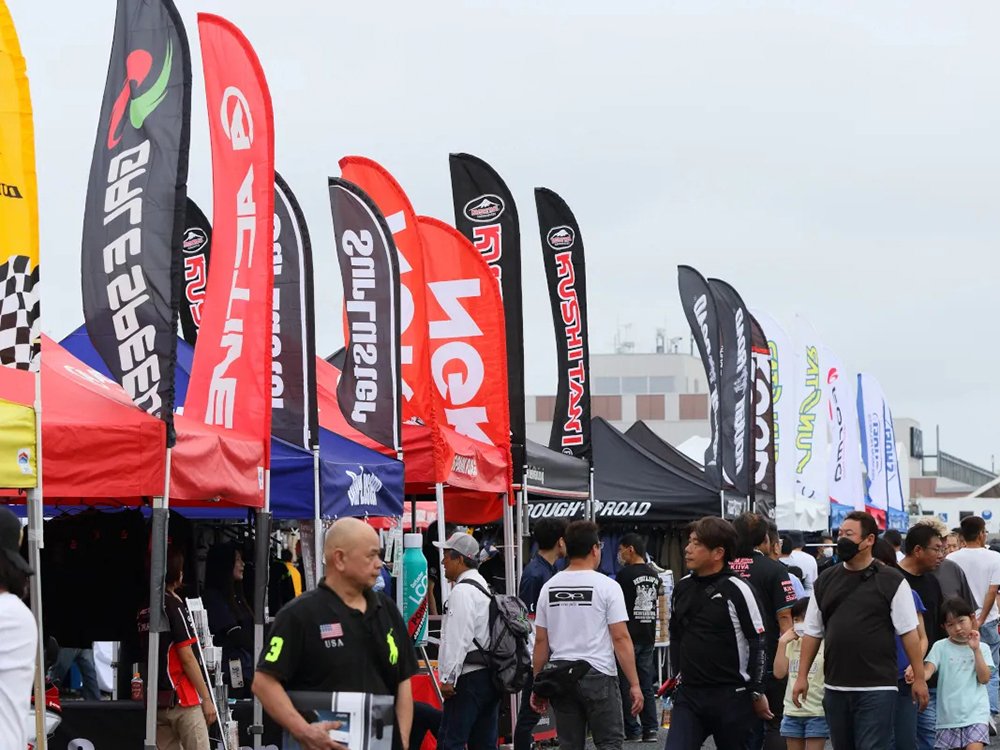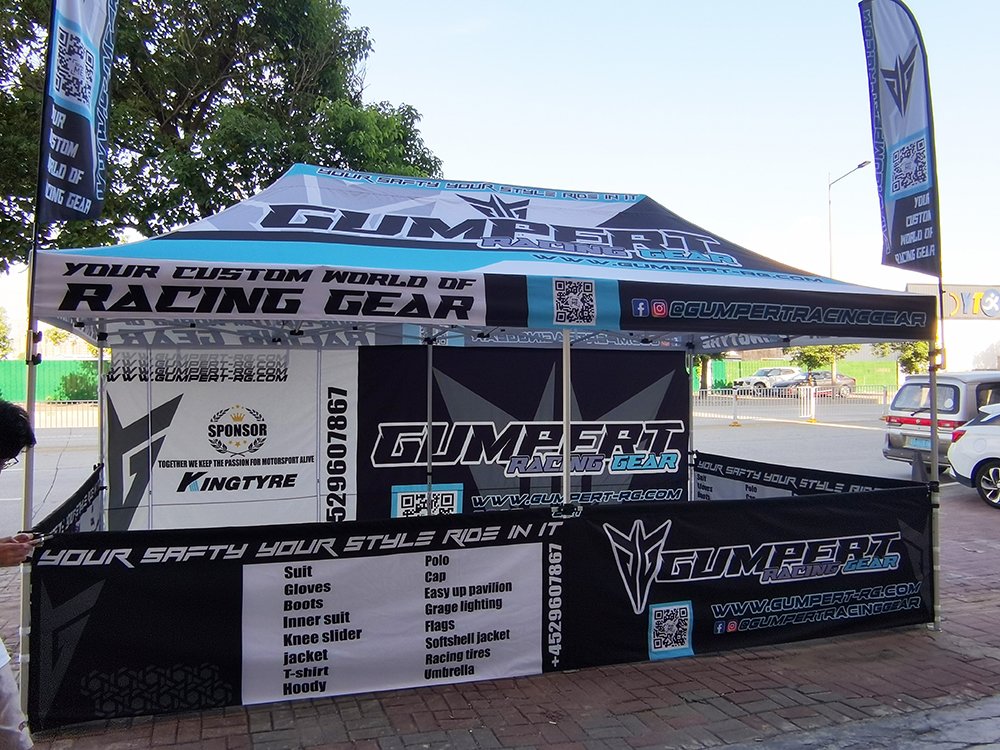Last Updated on 03/15/2025 by dtent.net
In outdoor exhibitions, tents are not only shelters from wind and rain, but also key elements for displaying brand image and attracting audience attention. The size selection of tents and the reasonable planning of exhibition space are directly related to the success of exhibition activities. This article will explore the importance of tent size and exhibition space planning in depth, and provide practical selection guidelines and planning strategies to help you create a perfect outdoor exhibition.
1. The importance of tent size selection
The size selection of tents is the first step in exhibition space planning, which directly affects the visual effect, audience flow and exhibit display effect of the exhibition. A suitable tent size can ensure the smooth progress of exhibition activities, enhance brand image and attract more audiences.
1.1 Impact on exhibition visual effects
The size of the tent directly affects the visual effect of the exhibition. A tent that is too large may cause the space to be empty, the exhibits to appear sparse, and it is difficult to form a visual focus; while a tent that is too small may make the exhibits appear crowded, and it is difficult for the audience to browse and appreciate comfortably. Therefore, choosing the right tent size is crucial to creating an ideal exhibition atmosphere.
1.2 Impact on audience flow
The size of the tent will also affect the flow of audiences. A tent that is too small may cause congestion at the entrance and exit, affecting the visitor’s experience; while a tent that is too large may make the visitor lose their way inside and find it difficult to find the exhibits of interest. Therefore, a reasonable tent size can ensure that the visitor can enter and exit and browse the exhibition smoothly.
1.3 Affecting the display effect of exhibits
The size of the tent will also affect the display effect of the exhibits. A tent that is too large may make the exhibits look small and difficult to attract the attention of the audience; while a tent that is too small may limit the placement and display of the exhibits, affecting the presentation effect of the exhibits. Therefore, choosing the right tent size can ensure that the exhibits are fully displayed and presented.
2. How to choose the right tent size
Choosing the right tent size requires considering multiple factors, including the type and scale of the exhibition, the expected number of visitors, and the characteristics of the exhibits. Here are some practical selection guidelines:
2.1 Determine the type and scale of the exhibition activity
Different types of exhibition activities have different requirements for tent size. For example, large international exhibitions usually require larger tents to accommodate more booths and visitors; while small corporate promotion activities may only require smaller tents to display products and brands. Therefore, before choosing the size of the tent, you must first clarify the type and scale of the exhibition.
2.2 Estimated number of visitors
The number of visitors is an important reference factor for choosing the size of the tent. Generally speaking, the number of visitors that can be accommodated per square meter of tent area is limited. Therefore, based on the estimated number of visitors, the required tent area can be calculated. At the same time, the mobility and comfort of the audience should also be considered to ensure that the interior of the tent is not too crowded.
2.3 Consider the characteristics and display methods of the exhibits
The characteristics and display methods of the exhibits will also affect the choice of tent size. For example, large mechanical equipment or artworks may require a larger space to display; while small electronic products or jewelry may only require a smaller space. In addition, the layout and display methods of the exhibits should also be considered to ensure that the exhibits can be fully displayed and presented.
2.4 Comprehensive consideration of budget and actual situation
When choosing the size of the tent, you must also consider the budget and actual situation. Although a larger tent may provide a better display effect and audience experience, it will also increase the cost and difficulty of construction. Therefore, when choosing the size of the tent, you should try to control the cost and difficulty while meeting the exhibition needs.
3. Exhibition space planning strategy
Choosing the right tent size is only the first step in exhibition space planning. Detailed space planning is required to ensure the smooth progress of exhibition activities. Here are some practical exhibition space planning strategies:
3.1 Determine the exhibition theme and style
The exhibition theme and style are the basis of exhibition space planning. On the basis of determining the exhibition theme and style, corresponding space planning schemes can be formulated, including color matching, layout design, lighting settings, etc. This helps to create a unified exhibition atmosphere and enhance the brand image and audience experience.
3.2 Reasonable planning of booth layout
Booth layout is the core content of exhibition space planning. When planning the booth layout, the characteristics and display methods of the exhibits should be considered, and the number and location of the booths should be reasonably arranged. At the same time, it is also necessary to ensure that the passages between booths are spacious and smooth, which is convenient for visitors to visit and browse. In addition, some special booths or interactive areas can be set up to attract the attention and interest of the audience.
3.3 Pay attention to audience flow management
Audience flow management is an important part of exhibition space planning. When planning the exhibition space, the mobility and comfort of the audience should be considered, and reasonable entrance and exit locations should be set to avoid congestion and confusion. At the same time, some guide signs and signboards can be set up to help visitors quickly find booths and areas of interest. In addition, according to the flow of visitors, the layout and display methods of booths can be adjusted in time to enhance the visitor’s experience.
3.4 Make full use of the internal space of the tent
The internal space of the tent is limited, so every inch of space should be fully utilized. When planning the exhibition space, the height and shape characteristics of the tent should be considered, and the placement of exhibits and decorations should be arranged reasonably. At the same time, the side walls and top space of the tent can also be used to set up some hanging displays or lighting equipment to increase the three-dimensional and layered sense of the exhibition. In addition, some rest areas or negotiation areas can also be considered to be set up inside the tent to provide a comfortable communication and rest environment for the audience.
3.5 Consider weather and environmental factors
In outdoor exhibitions, weather and environmental factors are factors that cannot be ignored. When planning the exhibition space, the local climate characteristics and weather forecast should be considered, and corresponding measures should be taken to deal with bad weather and environmental changes. For example, awnings or rainproof awnings can be set up to deal with strong sunlight or rain; ventilation equipment or air conditioning can also be set up to adjust the temperature and humidity inside the tent. These measures help ensure the smooth progress of exhibition activities and the safety and comfort of the audience.
-
Rated 0 out of 5
-
Rated 0 out of 5
-
Rated 0 out of 5
-
Rated 0 out of 5
4 Case Analysis: Space Planning Practice of Successful Exhibitions
In order to better understand the importance and practical application of tent size and exhibition space planning, the following will analyze and discuss several successful cases.
Case 1: International Auto Show
At the International Auto Show, the organizers chose several large tents to build the exhibition space. These tents are not only of moderate size, but can accommodate many car booths and visitors; they are also reasonably laid out, with spacious passages and special booth areas, allowing visitors to easily browse and appreciate various cars. In addition, the organizers also made full use of the side walls and top space of the tents, set up hanging displays and lighting equipment, and increased the three-dimensional sense and layering of the exhibition. These measures make the entire exhibition space spacious and layered, providing the audience with an excellent visiting experience.
Case 2: Outdoor Music Festival
At the outdoor music festival, the organizers chose several small tents as rest areas and artist dressing rooms. Although these tents are small in size, they are fully functional and can provide a comfortable rest environment for the audience and artists. At the same time, the organizer also adjusted the layout and number of tents in a timely manner according to the audience flow, ensuring that the audience can find a rest area in a short time and enjoy the pleasure brought by music. In addition, the organizer also paid attention to the decoration and lighting design of the tent, creating a unique music festival atmosphere and attracting a large number of audiences to participate.
Case 3: Enterprise New Product Launch Conference
At the enterprise new product launch conference, the organizer chose a medium-sized tent as the display area. This tent is moderate in size, well-planned and beautifully decorated, which can fully display the characteristics and advantages of the new product. At the same time, the organizer also set up multiple interactive areas and experience areas, allowing the audience to experience the charm and functions of the new product in person. In addition, the organizer also paid attention to the lighting and sound effect design of the tent, creating a high-end and professional conference atmosphere, and enhancing the brand image and audience experience.
Tent size and exhibition space planning are important
Tent size and exhibition space planning are important links that cannot be ignored in outdoor exhibition activities. Choosing the right tent size and making reasonable space planning can enhance the visual effect, audience flow and exhibit display effect of the exhibition, and provide the audience with an excellent visiting experience. Choose the right tent size by clarifying the type and scale of the exhibition, estimating the number of visitors, considering the characteristics and display methods of the exhibits, and comprehensively considering the budget and actual situation; and carry out detailed exhibition space planning by determining the exhibition theme and style, rationally planning the booth layout, focusing on visitor flow management, making full use of the internal space of the tent, and considering weather and environmental factors. I hope this article can provide you with useful references and inspirations, and help you achieve more complete success in outdoor exhibition activities!







